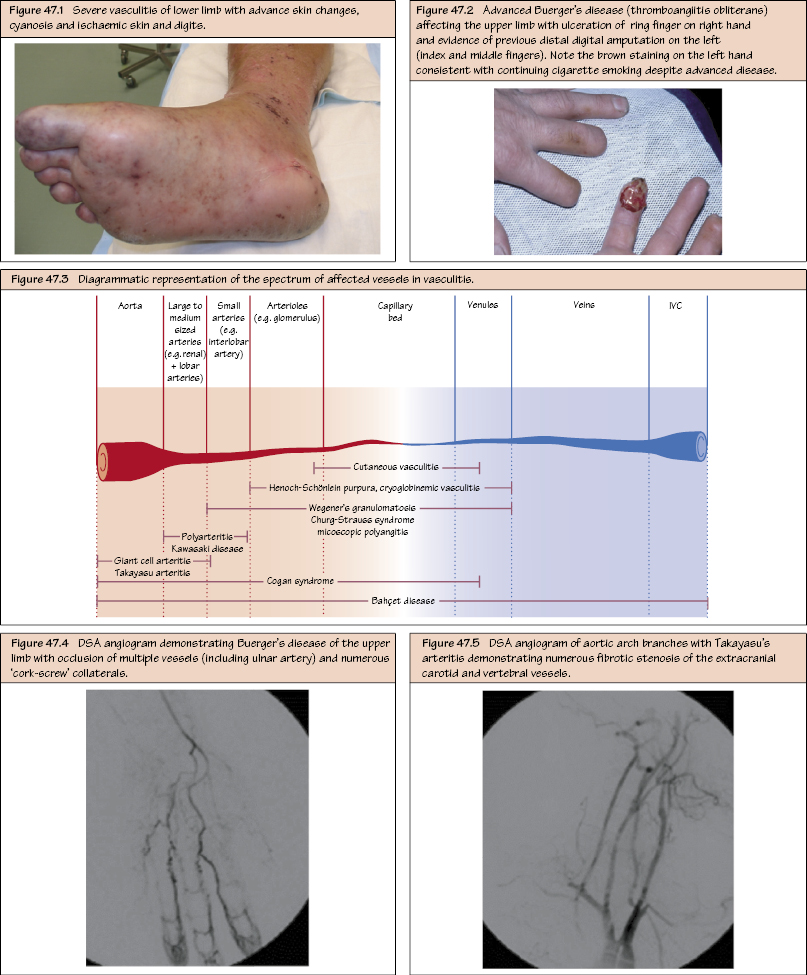Vasculitis II: Specific Conditions Clinical features. Prevalent in South-East Asia in young adults (female preponderance 8:1) and affecting aorta and its branches (elastic arteries). Two phases of disease described: acute systemic phase (prepulseless) and chronic obliterative phase (pulseless). Prepulseless phase: Non-specific systemic upset (fever, malaise, myalgia, arthralgia, headache, weight loss) with vessel tenderness. Pulseless phase: Obliteration of vessel (nodular thickening, stenosis, fibrosis). Late aneurysmal degeneration may also occur. Pulmonary artery is involved in 50% of cases. Hypertension is common (renal artery stenosis). Diagnosis. Clinical pattern of disease (large vessel involvement with angiographic changes). Histology shows inflammation of all three vessel wall layers progressing to chronic granulomatous formation, intimal nodular thickening and medial-adventitial fibrosis (‘skip’ pattern). Fifteen per cent are rheumatoid factor positive. ANA usually negative. Treatment. Anti-inflammatory agents and steroids, escalating to more potent immunosuppressant therapy as required. Surgical treatment of occlusive or aneurysmal disease (if indicated) is considered only when the acute inflammatory component is in remission and the target vessel is free of active inflammation. Clinical features. Disease of middle-aged and elderly patients (female preponderance 5:1) being more common in smokers and those with established atherosclerosis. It affects the small and medium-sized arteries (especially the cranial branches of the aorta [external carotid artery]).

Takayasu’s Arteritis
Giant Cell Arteritis (Temporal Arteritis)
Stay updated, free articles. Join our Telegram channel

Full access? Get Clinical Tree


